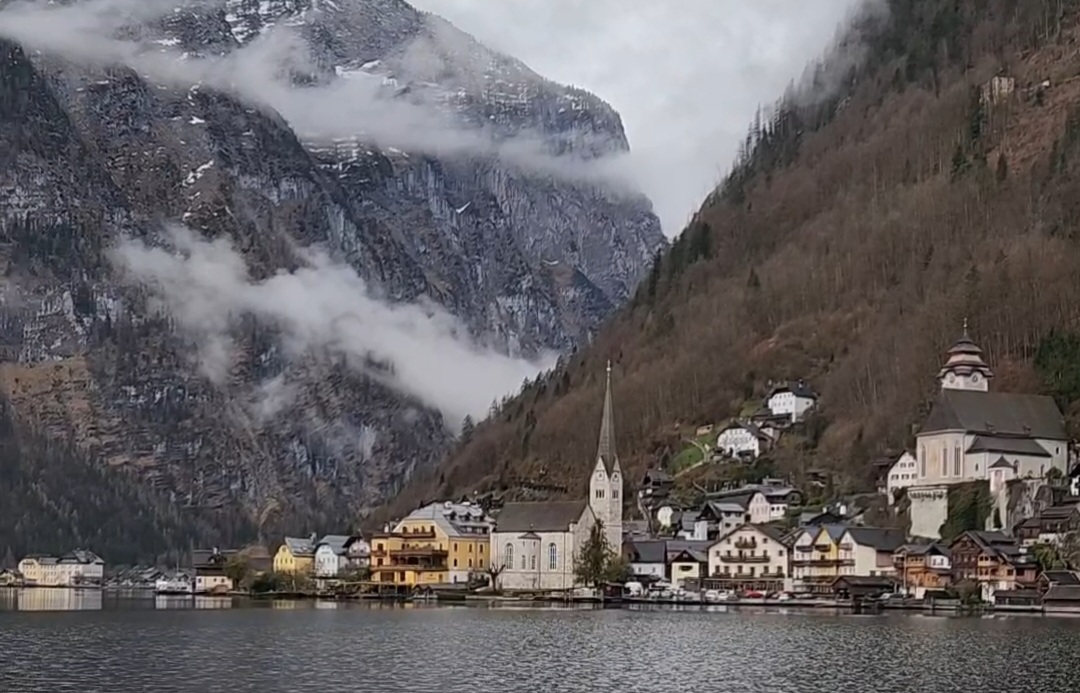
Hallstatt, Austria – On my first post-lockdown trip to Europe
Hallstatt, in Austria, has been on my bucket list for many years.
Like many people, one of my favourite places to visit in Austria is the Alps, but the lakes are quite stunning too. I was lucky enough to be get two postings to two different lakes in different parts of the country on my last work visit. One was on the most spectacular of the lakes, Hallstattersee. On the south-western end of this lake is the wonderfully picturesque lakeside town of Hallstatt, which conjures up everything quintessentially Austrian!
After what seemed like a never-ending lockdown and closed borders here in Melbourne, I finally made it back to Europe to work this year. I do a few different types of work, but my trips to Europe up until March 2020 were largely to teach English. I mostly do that in Austria, although occasionally I’ll get a posting in Germany, Slovakia or Italy. But there I was back in Austria, and teaching at the other end of the lake that had my bucket-list town of Hallstatt.



Getting to Hallstatt
To get to the town you must get to Hallstatt Railway station, on the opposite side of the lake. There are regular trains running from Bad Ischl. The ferry ride was 7 euros return when I visited. You can go via the other side of the lake, but the most common way is by train and then ferry. Click here for current ferry times and prices.
Mountains surround the lake and town. On the day I visited it had been snowing, and snow still capped them.
On a day with low cloud, crossing the lake is like crossing into a fairy-tale world of mist and magic, far, far away. I was lucky I left early and avoided the crowds. On the way over, there were only a few people on the ferry. On the way back it was full, with a huge crowd of mainly Chinese tourists waiting to pack onto the boat at Hallstatt Station. I had been warned!



Hallstatt Salt Mines and The Museum
Hallstatt is quite remote, and unique in its historical as well as geological attributes. Its salt mines are the oldest in the world and inhabitants mined them for thousands of years. The original inhabitants of the town were Celts, long before the Celts moved to the British Isles. You can take a tour of one of the salt mines, which costs about 40 euros for adults and half price for children 4 years and over (at the time of writing). Children under 4 years of age cannot take the tour. Visit the Hallstatt salt mine website for current prices and times.
Hallstatt also has an excellent museum, which, at 10 euros entry, is a must-see. It traces the history and tells the story of the town an its inhabitants from ancient times until today. One exhibit I found interesting was the 17th century birthing chairs!



17th Century Birthing Chairs
There are plenty of places to eat, from the traditional Austrian restaurants and Konditorei ( coffee and cake shops) to fast food and cheaper fare. You’ll have no trouble getting something to eat and drink!
The town sits on the side of a mountain, with traditional wooden houses creeping up the mountainsides. They remind one of the mountainside towns of the Kind Kush and Himalayas.

UNESCO World Heritage Site
The downside of Hallstatt is that it attracts a huge number of tourists, and although I was a tourist – some of the souvenir shops are just a bit too touristy. On the other hand there are plenty of locally made crafts which are well worth a look. Nevertheless, I can imagine the residents (no more than 7000) becoming tired of the constant stream of tour groups, although tourism is now one of their main sources of income.
Hallstatt is a UNESCO World Heritage listed site, so it is a must-visit for its historical, geological and cultural value, not to mention for its sheer beauty. I’m sure you’ll love it as much as I did, although the crowds of tour groups might make it a one time visit.


